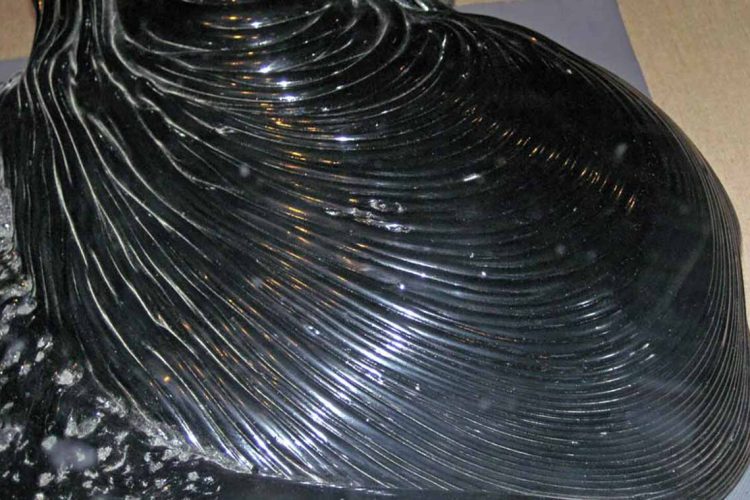of the topics, and in the following, we will examine its detailed details. Topics that we will discuss in the following are the Analysis of Hydrocarbon Fraction of Gilsonite and Natural asphalt analysis. First, we will analyze bitumen and its additives and then we will analyze natural asphalt.
Natural asphalt analysis:
Some types of asphalt are naturally formed as a result of the gradual shift of crude oil and the evaporation of its volatile elements over a long period of time. Natural asphalt is a type of asphalt that lasts longer than oil asphalts. This kind of asphalt may be found in nature as a pure element (lake asphalt) recovered from mines (mineral asphalt). Uintaite is another name for natural asphalt.
Analyzing is one way of determining the quality of asphalt. Natural asphalt analysis reveals the quality, durability, and application of asphalt in various industries. In an asphalt examination, several things will be calculated, including mass colour, powder colour, softening point, moisture, penetration, ash, mesh, solubility, carbon content, and so on.

Natural asphalt in mines has a feature, and its quality rises and falls in proportion to the amount of ash supplied to it. For example, various asphalts include less than 50% ash, which is considered to be among the best asphalts, and it can fluctuate from less than 10%, 15%, 20%, 30%, and even 50%, with the more ash, the lower the quality. Separation is more essential, as it is a difficult procedure that decreases asphalt quality and costs.
Natural asphalt’s most key qualities allow it to be utilized in a variety of applications:
- Softening Point
- Penetration
- Carbon and Hydrogen
- Nitrogen
- Sulfur
- Oxygen
Analysis of Hydrocarbon Fraction of Gilsonite:
Bitumen derived from different bituminous substances have such a wide range of physical and chemical properties. This demonstrates that the organic material composition in diverse bitumen source rocks was a crucial influence in defining the type of bitumens generated and can also be used to describe them. The solubility of bitumens in various organic solvents can be used to segregate them into fractions. The oily ingredients are soluble in propane, whereas the resins are soluble in n-pentane. Asphaltenes are benzene soluble but not n-pentane soluble, while carbenes are carbon disulfide soluble but not benzene soluble.

The expansion in macromolecular size is connected with the development from oils-toresins to asphaltenes to carbenes. Each fraction of bitumens can be subjected to a variety of structural elucidation methods for high molecular-weight compounds. Simple physical tests including specific gravity, refractive index, molecular weight, chemical analysis, and spectrum instrumental measurements are among them. The molecular weight, X-ray diffraction, nuclear magnetic resonance (NMR), infrared technique, and color intensity are the primary structural parameters of bitumens.
The innovative technology of gel permeation chromatography had been used to characterise the molecular distributions of a number of furfural alcohol resins, coal tar pitches, coumarone-indene resins, and gilsonite resins (GPC). The mol. wt. of the components in the furfural alcohol resins ranged from approximately 5000 to monomer. GPC resolved the lower mol. wt. species adequately, and the degrees of conversion to higher mol. wt. polymer were plainly discernible. The GPC curves of a succession of coal tar pitches’ tetrahydrofuran-soluble fractions ranged from 4000 to 70 or 80. The pitch fractions all tailed on the high mol. wt. sides, having peak maximums about 200. With softening points, the coumarone-indene GPC curves changed dramatically.
These polymers’ molecular distributions ranged from 5000 through 70 or 80. The coumarone-indene molecular distributions were likewise shown to be colour index dependent. The molecular distributions of gilsonite resin ranged from 5000 to 70 or 80, with peak maximums around 2000.

